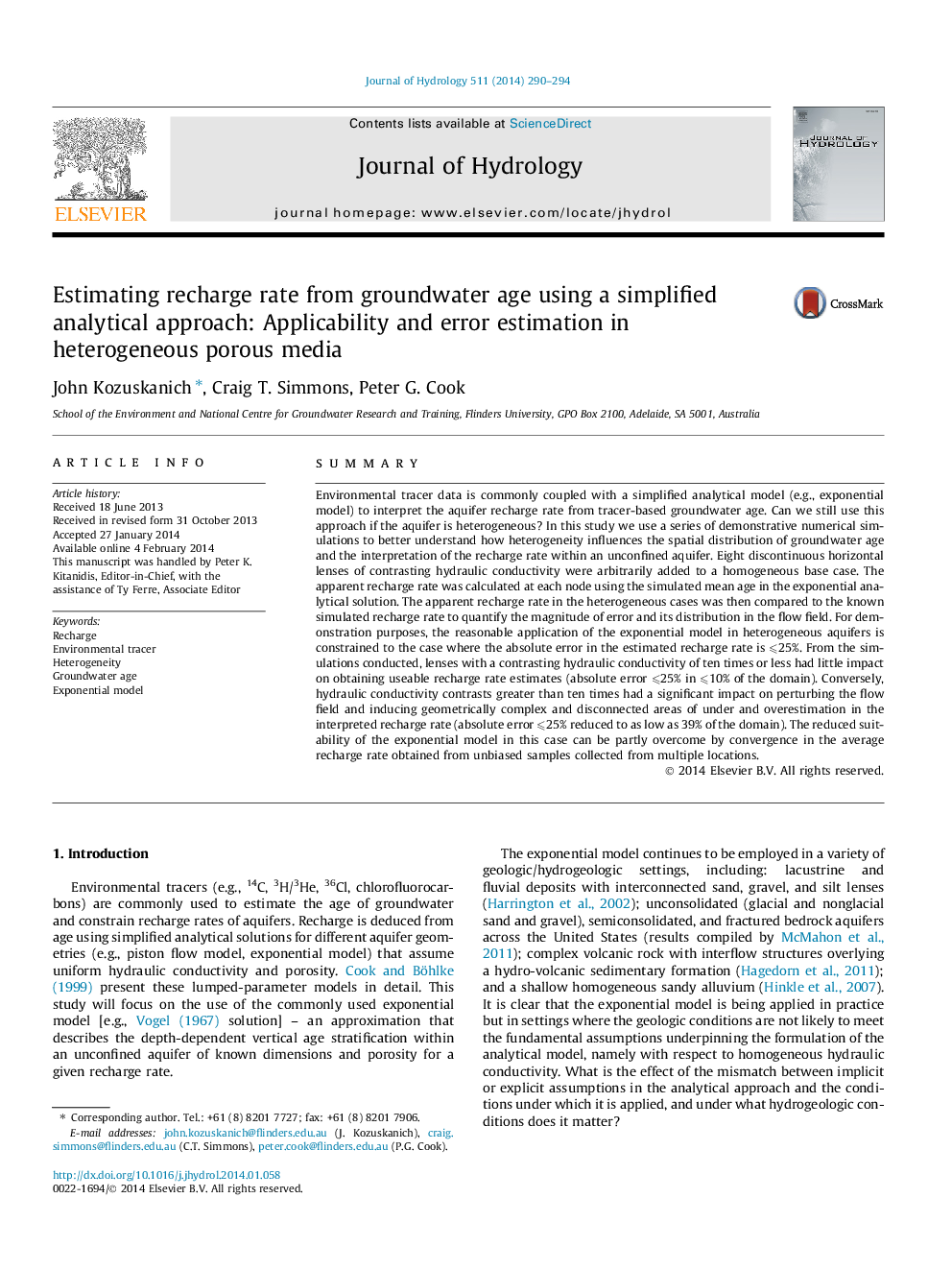| Article ID | Journal | Published Year | Pages | File Type |
|---|---|---|---|---|
| 6413292 | Journal of Hydrology | 2014 | 5 Pages |
â¢High-K lenses can induce complex groundwater age distributions.â¢Quantifying recharge rate error requires a priori knowledge of heterogeneity.â¢The average of multiple unbiased samples may provide a reasonable estimate.
SummaryEnvironmental tracer data is commonly coupled with a simplified analytical model (e.g., exponential model) to interpret the aquifer recharge rate from tracer-based groundwater age. Can we still use this approach if the aquifer is heterogeneous? In this study we use a series of demonstrative numerical simulations to better understand how heterogeneity influences the spatial distribution of groundwater age and the interpretation of the recharge rate within an unconfined aquifer. Eight discontinuous horizontal lenses of contrasting hydraulic conductivity were arbitrarily added to a homogeneous base case. The apparent recharge rate was calculated at each node using the simulated mean age in the exponential analytical solution. The apparent recharge rate in the heterogeneous cases was then compared to the known simulated recharge rate to quantify the magnitude of error and its distribution in the flow field. For demonstration purposes, the reasonable application of the exponential model in heterogeneous aquifers is constrained to the case where the absolute error in the estimated recharge rate is ⩽25%. From the simulations conducted, lenses with a contrasting hydraulic conductivity of ten times or less had little impact on obtaining useable recharge rate estimates (absolute error ⩽25% in ⩽10% of the domain). Conversely, hydraulic conductivity contrasts greater than ten times had a significant impact on perturbing the flow field and inducing geometrically complex and disconnected areas of under and overestimation in the interpreted recharge rate (absolute error ⩽25% reduced to as low as 39% of the domain). The reduced suitability of the exponential model in this case can be partly overcome by convergence in the average recharge rate obtained from unbiased samples collected from multiple locations.
